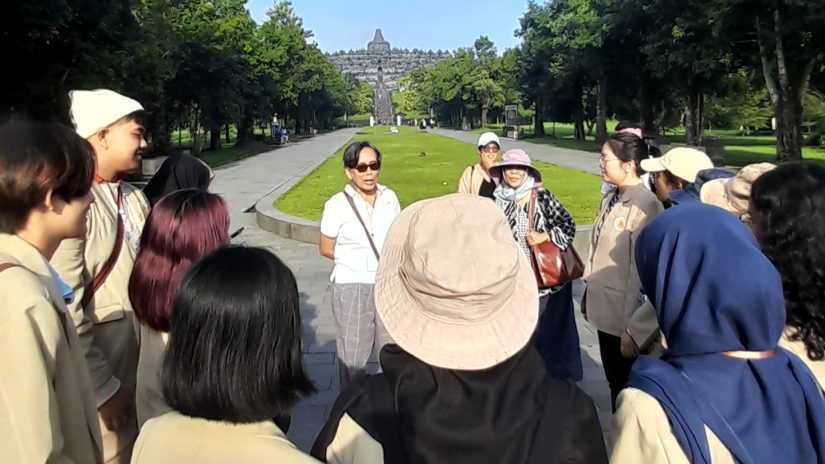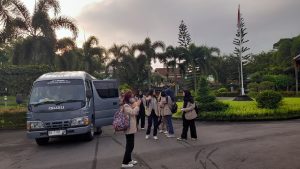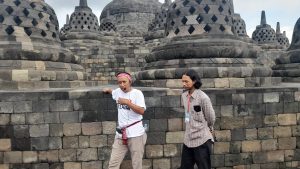
SDGs 4: Quality Education | SDGs 11: Sustainable Cities and Communities | SDGs 17: Partnerships For The Goals
On Friday, March 8, 2024, as many as 16 UGM Archaeology students accompanied by three Department of Archaeology lecturers participated in the Borobudur Youth Engage 2024. This program is part of the cultural introduction program from UNESCO to youth, especially university students. The Borobudur Youth Engage 2024 program with UNESCO Jakarta collaborates with some universities such as Universitas Gadjah Mada through the Faculty of Cultural Sciences UGM, Atma Jaya University, and Tidar University. In this activity, UGM Archaeology participated in a tour around Borobudur Temple and Borobudur Temple Tourism Area to learn the history of archaeological remains and management of cultural heritage management.

The UGM Archaeology group departed from the Faculty of Cultural Sciences UGM at 05.30 WIB and arrived at Borobudur Temple at 06.30 WIB. When arriving at the location, the UGM Archaeology group went to the registration desk and was given special equipment in the form of sandals called upanat sandals. Upanat means footwear which is suitable to be mentioned as special sandals that must be used when visiting Borobudur Temple as a preventive measure from the Borobudur Conservation Center to prevent damage to the temple’s andesite stones. Uniquely, the shape of these upanat sandals follows the shape of the footwear found on Karmawibhangga Relief No. 150 from the walls of Borobudur Temple.
After registration, UGM Archaeology students including Atma Jaya University and Tidar University students visited the pavilion not far from the registration location to watch historical presentations and introduction of supporting sites around the Borobudur Temple area. After watching the presentation, the students departed on foot to the Borobudur Temple courtyard area. Arriving at the courtyard area, the students were assisted by a guide who explained the points of interest around the Borobudur Temple area which is a tourist attraction that is often visited by domestic and foreign visitors. The guide then invited the group to climb Borobudur Temple for a further tour of the meaning of the reliefs and statues around the temple.

After the temple tour ended, the group of students and lecturers visited one of the cultural heritage sites around Borobudur Temple, namely the Brongsongan Site. At this site, students are invited to have an interactive discussion with questions and answers about the Brongsongan Site which has some temple-style relics. After visiting the Brongsongan Site, the group followed the last agenda which was a meeting session and presentation by successful figures from the management of the Borobudur Temple area, one of which was the famous Batik Nawasena craft to the international scene.
This activity ended at 14.00 WIB, with the UGM Archaeology group returning to the Faculty of Cultural Sciences UGM. The implementation of one of several activities from UNESCO is a start for UGM Archaeology students to recognize and learn more about local cultural heritage.

